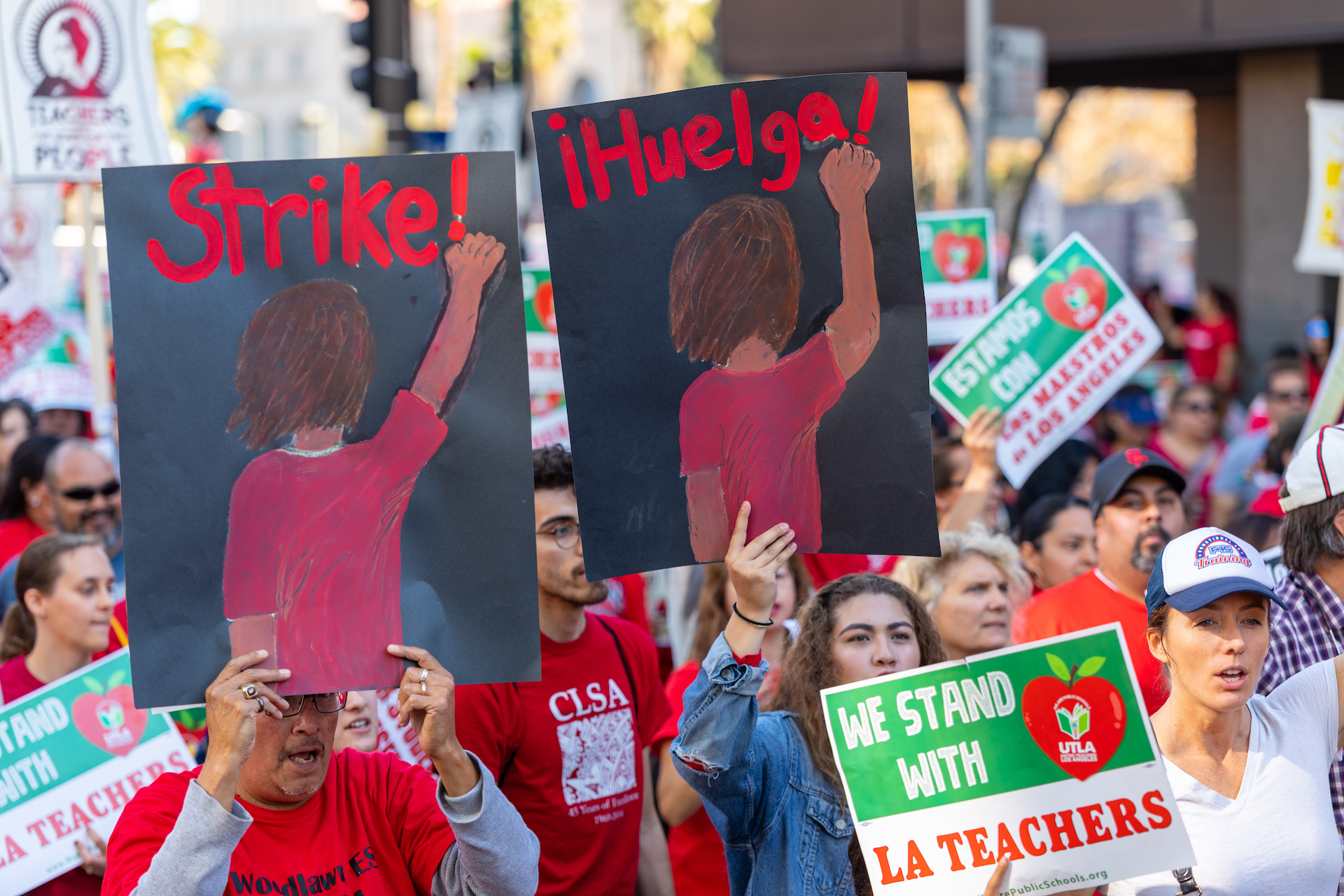By Erin McHenry-Sorber
The first mass teacher labor action of 2019 is unfolding in California as the United Teachers Los Angeles walked out for the first time in 30 years.
This strike, which began on Jan. 14, isn’t just important to people in Los Angeles. Here are three reasons the nation should pay attention.
1. The Los Angeles case is different
The Los Angeles strike stands out because of the size of the district.
With 640,000 students, and about 500,000 enrolled in the district’s public schools, Los Angeles represents the second largest school district in the United States. The only bigger district is New York City.
The Los Angeles strike involves 34,000 teachers. To compare, the statewide 2018 teacher strike in West Virginia – where I am researchingteacher strikes and teacher shortages – involved about 20,000 teachers and affected approximately 270,000 students.
Also, the political context is different. When West Virginia teachers walked out of the classroom, they were battling a conservative state legislature in a largely rural, majority-white state. Los Angeles is urban, far more diverse, and located in a state that has voted mostly Democratic in presidential elections since 1992.
Los Angeles Unified School District’s student population is 73 percent Latino, 10.5 percent white, 8.2 percent black and 4.2 percent Asian. The district serves over 150,000 students whose first language is not English.
The situation for the Los Angeles teachers union is also different in several ways. For instance, it is engaged in an active fight against the rapid growth of charter schools. Los Angeles is home to the largest number of charter schools in the U.S. with 277.
Since 2008, the charter industry in Los Angeles has grown 287 percent. According to the Los Angeles teachers union, this is effectively siphoning US$550 million per year from the district’s traditional public schools.
The union argues that Los Angeles Unified School District superintendent, Austin Beutner, is a pro-charter school superintendent with no education experience.
The teachers union has proposed greater transparency and more accountability for Los Angeles charter schools and has called for an immediate cap on charter school growth in the school district. The district has provided no counter offer to these demands.
Teachers in Los Angeles have negotiated the current contract under dispute for over 20 months, and have been working without a contract for over a year. This is not uncommon. For example, teachers in Oakland, California, have been working without a contract for more than a year. And a recent contract resolution following a Pennsylvania school district strike came after teachers worked without a contract for three and a half years.
2. It’s not just about better pay
Like strikes in Oklahoma, Arizona, Kentucky, Colorado and North Carolina, the Los Angeles teachers’ strike is essentially about greater investment in public education.
For the Los Angeles teachers, this includes a 6.5 percent salary increase to make up for what the union calls “stagnant wages.”
The average teacher makes almost 19 percent less in wages than comparable workers. In California, specifically, this figure is about 15 percent. Los Angeles teachers make between $50,000 and $80,000, but the cost of living in LA is so high that a two-bedroom apartment requires a six-figure income. This means many teachers have second or even third jobs.
But beyond wages, teachers have begun to demand a greater commitment to investment in public education from their governing bodies, either school boards or state legislatures.
In Oklahoma for example, striking teachers protested inadequate instructional materials, including outdated and deteriorating textbooks. And in Los Angeles, striking teachers are demanding, among other things, a reduction in classroom sizes, which can be up to 46 students in some classrooms based on their current contract. Teachers argue that the large class sizes make it difficult to meet the needs of their students.
They also want an increase in school nurses, librarians and counselors.
These issues get at the heart of student learning. Students need adequate supplies, individual teacher attention and access to mental health services, such as counselors, if they are expected to thrive in the classroom.
But the ability for public schools to provide for all of these instructional and social support needs has become increasingly difficult as states have continued to underfund their public education systems.
3. Los Angeles strike could spur other teacher strikes
The Los Angeles teachers strike suggests that the wave of teacher protests is not over.
Teacher strikes and work stoppages have been preceded by a nationwide teacher shortage that continues to grow across many states, which do not have enough certified math, special education, science, and in increasing cases, elementary teachers – to meet the needs of their students. In California 80 percent of districts reported a teacher shortage in the 2017 to 2018 school year. Teacher shortages are most often blamed on low teacher pay, one of the commonalities across teacher strikes.
These shortages are arguably exacerbated by an increase in the “teacher pay penalty,” the term used to describe disparities in teacher salary compared to professions requiring comparable levels of education.
At the same time teachers find themselves increasingly undervalued, most states are still funding their public education systems at levels below that of the 2008 recession. This includes California, which is ranked 41st nationwide in per pupil spending when adjusted for cost of living.
As long as public schools remain underfunded, the nation can expect to see more teacher strikes in other school districts and states in the near future.
This article is republished from The Conversation under a Creative Commons license. Read the original article here: http://theconversation.com/3-reasons-to-pay-attention-to-the-la-teacher-strike-109766.

